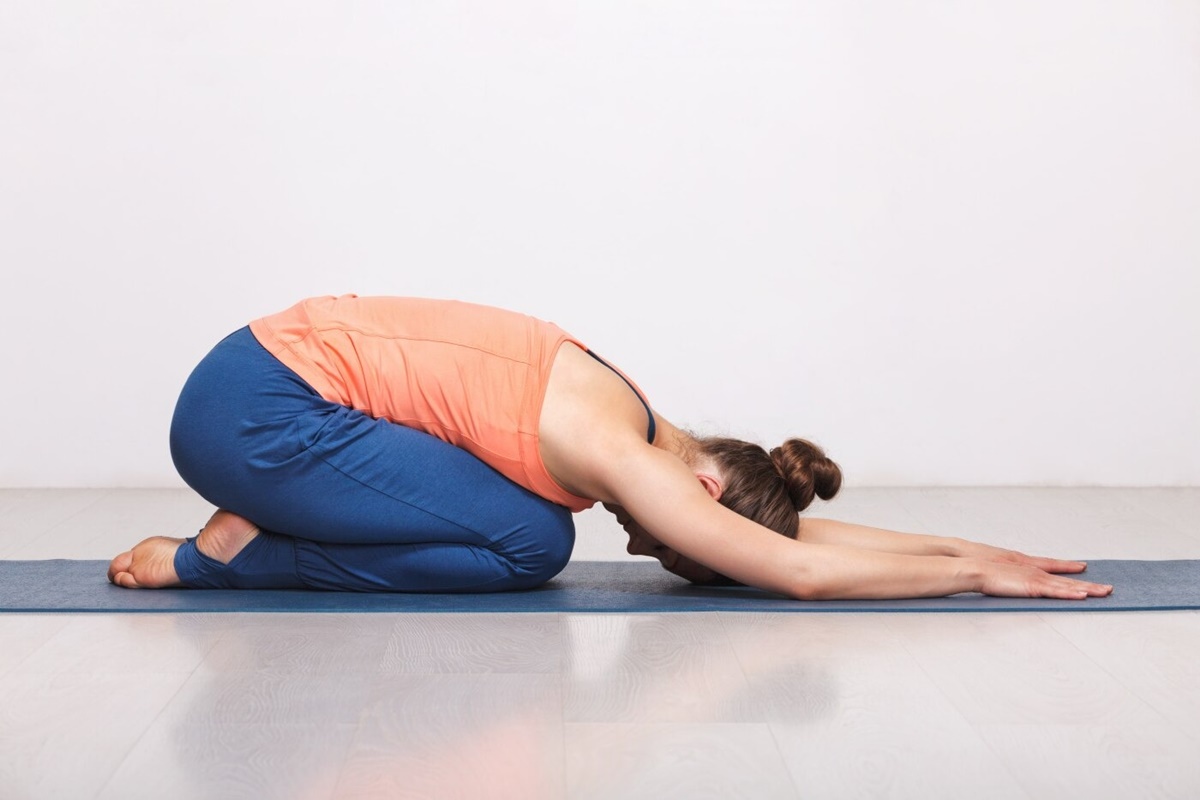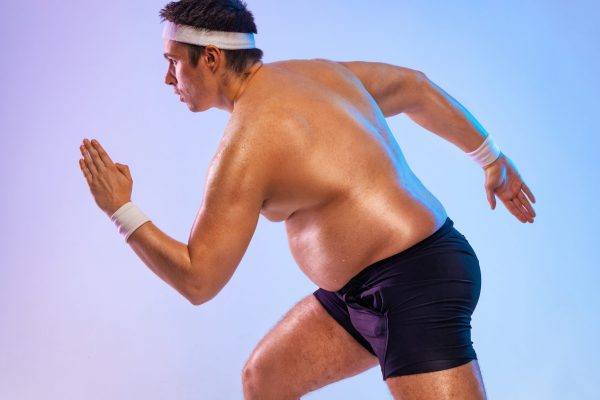

Featured
What Exercise Makes You Taller
Modified: January 2, 2024
Looking to increase your height naturally? Discover the featured exercise that can help you achieve your goal of becoming taller.
Introduction
In a society where height is often associated with confidence and success, many individuals seek ways to increase their height. While genetics play a significant role in determining one’s height, there are certain exercises that can potentially contribute to height growth. By understanding the relationship between exercise and height, you can make informed decisions about which activities to incorporate into your fitness routine.
When it comes to height, it’s important to clarify that exercise alone cannot magically make you taller if you have reached your genetic potential. However, exercises can enhance proper posture, strengthen the muscles, improve bone density, and promote a healthy lifestyle – factors that can optimize your height potential. This article explores various exercises and their potential impact on height growth.
It is crucial to note that while exercises can have a positive influence on height, the results may vary from person to person. Factors such as age, gender, and overall health can affect the effectiveness of exercises in increasing height. It’s also important to consult with a healthcare professional or a qualified fitness trainer before starting any new exercise program, especially if you have underlying health conditions or physical limitations.
Now, let’s delve into the relationship between exercise and height and explore the specific exercises that may potentially contribute to height enhancement.
Understanding the Relationship between Exercise and Height
Exercise plays a crucial role in maintaining overall health and well-being, and it can also have an impact on height growth. While genetics primarily determine our height, certain exercises can help optimize our height potential.
One way exercise can potentially contribute to height growth is through its impact on posture. Poor posture can cause the spine to curve, resulting in a shorter stature. Regular exercise, particularly exercises that focus on strengthening the core muscles and promoting good posture, can help improve spinal alignment and create the illusion of increased height.
Furthermore, exercise can stimulate the production of growth hormones. Growth hormones are responsible for the growth and development of bones and tissues, which can directly impact height. High-intensity exercises, such as sprinting and jumping, have been shown to trigger the release of growth hormones, potentially enhancing height growth.
In addition to its direct effects on height, exercise can also contribute to increased bone density. Weight-bearing exercises, such as strength training and weightlifting, exert stress on the bones, prompting them to become denser and stronger. Stronger bones can provide a better foundation for the body, promoting proper alignment and potentially optimizing height.
Furthermore, exercise can improve overall health, which indirectly supports height growth. Regular exercise promotes cardiovascular health, enhances lung capacity, and boosts circulation, all of which contribute to a healthier body and potentially support optimal height growth.
It’s important to note that the effectiveness of exercise in increasing height can vary depending on factors such as age and gender. During puberty, when growth plates in the bones are still open, there is a greater potential for height increase through exercise. However, after puberty, when the growth plates fuse and bone growth stops, the potential for height enhancement is more limited.
While exercise can potentially contribute to height growth, it’s important to maintain realistic expectations. The impact of exercise on height is generally modest and varies from person to person. Factors such as genetics, nutrition, and overall health also play significant roles in determining height. Nevertheless, incorporating exercises that promote good posture, stimulate the release of growth hormones, and improve bone density can be beneficial for overall well-being and potentially optimize height potential.
The Role of Genetics in Height Determination
When it comes to height, genetics play a dominant role in determining our ultimate stature. The genes we inherit from our parents influence our growth and development, including our height potential.
Height is a polygenic trait, meaning that it is influenced by multiple genes. The interaction between these genes can result in a wide range of height outcomes. Some individuals may have genes that predispose them to be taller, while others may have genes that are associated with a shorter stature.
Many studies have shown that height heritability is significant. In fact, it is estimated that approximately 80% of our height can be attributed to genetics. This means that the height of our biological parents is a strong predictor of our own height.
Scientists have identified several genes that are involved in height determination. One notable gene is the Human Growth Hormone (HGH) gene. This gene produces a protein called growth hormone, which plays a crucial role in skeletal growth and development. Variations in the HGH gene can influence the production and function of growth hormone, and ultimately impact height.
Other genes, such as the Insulin-like Growth Factor 1 (IGF-1) gene, have also been implicated in height regulation. IGF-1 is a hormone that is crucial for bone and tissue growth. Genetic variations in the IGF-1 gene can affect the levels of this hormone and subsequently impact height.
It’s important to note that while genetics play a significant role in height determination, environmental factors can also influence height to some extent. Factors such as nutrition, health conditions, and socio-economic status can affect growth and development, potentially leading to variability in height outcomes among individuals with similar genetic backgrounds.
Understanding the role of genetics in height determination is essential for managing expectations when it comes to exercises and interventions aimed at increasing height. While exercise and lifestyle modifications can have positive effects on height potential, they cannot override the genetic blueprint that sets our ultimate height limit.
However, it’s important to adopt a holistic approach to health and well-being. By maintaining a healthy lifestyle, including regular exercise, balanced nutrition, and good sleep habits, we can optimize our growth potential within the boundaries set by our genes. Additionally, focusing on improving posture and strengthening the muscles can help maximize our height potential and enhance overall physical appearance.
Stretching Exercises and their Effect on Height
Stretching exercises are often recommended for improving flexibility and preventing muscle tightness. While stretching alone cannot increase your height beyond your genetic potential, it can have certain positive effects on your overall posture and spinal alignment, which may give the appearance of increased height.
One way stretching exercises can potentially impact height is by elongating the spine. The spine is made up of vertebrae, and in between each vertebra, there are intervertebral discs that act as shock absorbers. These discs are composed of a jelly-like substance that can compress throughout the day, causing the spine to shrink slightly. By engaging in stretching exercises, you can decompress the spine and reduce the compression on the intervertebral discs, potentially resulting in a taller appearance.
Some stretching exercises that focus on lengthening the spine include hanging from a bar, cat-cow stretch, cobra pose, and the bridge exercise. These exercises help stretch the muscles and ligaments surrounding the spine and promote better alignment.
In addition, stretching exercises can also help improve overall posture by lengthening tight muscles and relieving tension. Poor posture, such as slouching or rounded shoulders, can make you appear shorter than you actually are. Stretching exercises, particularly those targeting the chest, shoulders, and hip flexors, can help open up the front of the body and counteract the effects of poor posture, potentially giving the illusion of increased height.
It’s important to note that stretching exercises should be performed correctly and without force. Overstretching or performing exercises incorrectly may lead to muscle strains or other injuries. It’s recommended to warm up before stretching and to perform stretches in a controlled and gradual manner.
While stretching exercises may not directly increase your height, they can certainly contribute to better posture and spinal alignment, which can enhance your overall appearance and potentially make you look taller. Incorporating stretching into your daily routine, along with other exercises and healthy habits, can help optimize your height potential and promote better overall well-being.
Yoga Poses for Increasing Height
Yoga is a popular practice known for its numerous physical and mental benefits. While yoga cannot magically make you taller, it can help improve posture, increase flexibility, and strengthen the muscles, which can contribute to a taller appearance.
Here are some yoga poses that are often recommended for their potential to promote better posture and spine elongation:
- Mountain Pose (Tadasana): Stand with your feet hip-width apart, lengthen your spine, and reach the crown of your head towards the ceiling. Focus on grounding through your feet and engaging your core muscles for stability. Tadasana helps improve posture and promotes proper spinal alignment.
- Triangle Pose (Trikonasana): Stand with your legs wide apart, extend one arm to the side, and reach the other arm overhead towards the opposite side. Keep your chest open and gaze towards your top hand. Trikonasana stretches the spine, hamstrings, and hips, promoting flexibility and better posture.
- Downward-Facing Dog (Adho Mukha Svanasana): Start on your hands and knees, then lift your hips towards the ceiling, forming an inverted V shape. Press your hands into the mat and lengthen your spine, creating space between each vertebra. Downward Dog stretches the entire body, including the spine, hamstrings, and shoulders, promoting improved posture and flexibility.
- Bridge Pose (Setu Bandhasana): Lie flat on your back with your knees bent and feet hip-width apart. Press your feet into the mat as you lift your hips towards the ceiling, creating a bridge shape with your body. Bridge pose helps strengthen the glutes, back, and core muscles, supporting better posture and spinal alignment.
- Camel Pose (Ustrasana): Kneel on the floor with your shins and tops of your feet on the ground. Place your hands on your lower back and gently arch your back, reaching your hands towards your heels. Camel pose stretches the entire front of the body, including the chest and abdomen, promoting better posture and spine elongation.
These are just a few examples of yoga poses that can potentially contribute to better posture and spinal alignment. It’s important to practice yoga with proper alignment and under the guidance of a qualified instructor, particularly if you are a beginner or have any underlying health conditions.
Incorporating yoga into your fitness routine not only provides physical benefits but also promotes a sense of mindfulness and relaxation. By combining yoga with other forms of exercise, healthy habits, and an overall balanced lifestyle, you can optimize your height potential and improve your overall well-being.
Strength Training and its Impact on Height
Strength training, also known as resistance training, involves exercises that target muscular strength and endurance. While strength training primarily focuses on building muscle mass and strength, it can indirectly have an impact on height by strengthening the bones and improving overall posture.
One of the key benefits of strength training is its ability to increase bone density. When you engage in resistance exercises, the stress placed on your bones stimulates the production of new bone tissue, making them denser and stronger. Stronger bones provide a solid foundation for the body, promoting better posture and potentially optimizing height.
Additionally, strength training exercises can help improve posture. By strengthening the muscles of the core, back, and shoulders, you can enhance your overall posture and alignment. Good posture not only makes you appear taller but also reduces the risk of developing back and neck pain caused by poor alignment.
Some common strength training exercises that target posture and overall body strength include squats, lunges, deadlifts, shoulder presses, and rows. These exercises engage multiple muscle groups simultaneously, promoting balanced development and stability.
It’s important to note that strength training should be performed with proper form and technique to prevent injuries. Starting with lighter weights and gradually increasing the intensity can help you build strength safely and effectively.
While strength training can have numerous benefits for overall health and fitness, it’s crucial to understand that it cannot directly increase your height beyond your genetic potential. The growth plates in the bones, responsible for vertical growth, typically close during puberty. Therefore, the potential for height increase through strength training is limited after this stage.
Nevertheless, incorporating strength training into your fitness routine can help you optimize your height potential within the confines of your genetic blueprint. By building strong muscles and improving posture, you can improve your overall appearance and potentially give the illusion of increased height.
It’s important to remember that a well-rounded exercise routine that includes cardiovascular exercises, stretching, and other forms of physical activity is ideal for overall health and fitness. Consulting with a fitness professional can help you develop a personalized strength training program that suits your goals and abilities.
The Benefits of Swimming for Height Growth
Swimming is a highly beneficial form of exercise that not only improves cardiovascular fitness but also promotes overall physical development. While swimming cannot directly increase height beyond your genetic potential, it offers several advantages that can optimize your height growth potential.
One of the main benefits of swimming is its low-impact nature. When you swim, the buoyancy of water reduces the pressure on your joints and spine, minimizing the risk of injuries and allowing for a full range of motion. This makes swimming an ideal exercise for individuals of all ages, including children and adolescents who are still growing.
Swimming engages multiple muscle groups simultaneously, leading to a full-body workout. It helps strengthen the muscles in the arms, shoulders, back, core, and legs. By developing and toning these muscles, swimming contributes to better posture, spinal alignment, and overall body strength. Maintaining good posture not only makes you look taller but also supports the healthy growth and development of the spine.
Furthermore, swimming is a great exercise for improving lung capacity and promoting efficient breathing. The rhythmic breathing techniques used in swimming can enhance oxygen intake and carbon dioxide removal, supporting proper lung function. Good respiratory health is crucial for overall growth and development, including height potential.
Swimming also helps improve flexibility and promotes better joint mobility. The range of motion required for various swimming strokes helps stretch and lengthen the muscles and connective tissues. Enhanced flexibility can prevent muscle imbalances and tightness, which can impact posture and hinder growth.
In addition to the physical benefits, swimming can also provide mental and emotional well-being. The calming and meditative nature of being in the water can reduce stress levels and promote relaxation. Swimming can improve mood, mental clarity, and overall cognitive function, which can indirectly support healthy growth and development.
While swimming offers numerous benefits for height growth potential, it’s important to note that consistency and proper technique are key. Aim for regular swimming sessions to maximize the benefits, and consider working with a swimming coach or instructor to ensure proper form and technique.
Lastly, it’s essential to incorporate other forms of exercise and maintain a balanced lifestyle for optimal growth and development. Incorporating strength training, stretching, and other activities that promote posture, bone health, and overall physical well-being can complement the benefits of swimming.
Overall, swimming is a fantastic exercise for supporting a healthy lifestyle and optimizing height growth potential. Its low-impact nature, full-body engagement, and positive impact on posture and breathing make it a valuable addition to any fitness routine.
Jumping and Height Enhancement
Jumping is a dynamic exercise that involves explosive movements and can have a positive impact on overall physical fitness, including height enhancement. While jumping exercises cannot directly increase your height beyond your genetic potential, they can contribute to optimizing your height growth potential in a few different ways.
One way jumping exercises can potentially impact height is through the stimulation of growth hormones. During a high-intensity jump, such as plyometric jumps or jump squats, the body experiences a high level of stress, which triggers the release of growth hormones. These hormones, including human growth hormone (HGH), play a key role in bone growth and development, potentially supporting optimal height growth.
In addition to supporting hormonal release, jumping exercises can also help increase bone density. Jumping places stress on the bones, which prompts the body to adapt by making them stronger and denser. The increased bone density can provide a solid foundation for the body, promoting proper alignment, and potentially optimizing height.
Another way jumping exercises can contribute to height enhancement is through their impact on muscle strength and power. Jumping engages multiple muscle groups, including the legs, core, and even the upper body during certain variations. Building stronger muscles can improve overall posture, stability, and body control, which may result in a taller and more confident appearance.
It’s important to note that proper technique and progression are crucial when incorporating jumping exercises into your fitness routine. Beginners should start with lower intensity jumps, such as squat jumps or standing long jumps. As you build strength and confidence, you can progress to higher intensity plyometric exercises, like box jumps or depth jumps. Working with a qualified fitness professional can help ensure correct form, minimize the risk of injury, and create an appropriate progression plan.
It’s worth mentioning that while jumping exercises can have potential benefits for height enhancement, they should be combined with other forms of exercise and a well-rounded fitness routine. Incorporating strength training, stretching, and cardiovascular activities can further support overall physical development, improve posture, and optimize height growth potential.
Remember that genetics play a significant role in determining your ultimate height, and exercise alone cannot alter your genetic predisposition. However, by engaging in regular jumping exercises, you can support optimal height growth potential, enhance your physical capabilities, and improve your overall well-being.
Cycling and its Influence on Height
Cycling is a popular form of exercise that offers numerous benefits for cardiovascular fitness, muscle strength, and overall physical well-being. While cycling itself may not directly impact your height beyond your genetic potential, it can indirectly contribute to factors that influence height growth.
One way cycling can potentially influence height is through its impact on overall health and well-being. Regular cycling can improve cardiovascular fitness, enhance lung capacity, and boost circulation throughout the body. By maintaining good overall health, including a healthy weight and strong immune system, you can create an optimal environment for growth and development, potentially optimizing your height potential.
Furthermore, cycling is a weight-bearing exercise, which means it places stress on the body’s bones and muscles. Weight-bearing exercises, including cycling, can promote the development of strong and dense bones. Strong bones provide a stable framework for the body, improve posture, and support proper alignment, potentially optimizing height.
While cycling primarily targets the lower body muscles, such as the quadriceps, hamstrings, and glutes, it also engages muscles in the core and upper body for stability and control. Building stronger muscles can promote better posture, stability, and body control, which can contribute to an optimal height appearance.
In addition to these physical benefits, cycling can have positive effects on mental well-being. Engaging in regular cycling can help reduce stress, improve mood, and enhance overall cognitive function. Mental well-being and stress reduction play a significant role in optimal growth and development during adolescence, which is a critical stage for height potential.
It’s important to note that to optimize the potential benefits of cycling, it’s essential to ensure proper bike fit and maintain correct cycling posture. Incorrect bike fit or poor posture while cycling can lead to muscular imbalances, aches, and discomfort, which may negatively impact motor development and potentially hinder height growth.
While cycling is a beneficial exercise for overall health and well-being, it’s essential to incorporate other forms of exercise and maintain a balanced lifestyle for optimal growth and development. Including strength training exercises to target the upper body, as well as stretching to improve flexibility, can complement the benefits of cycling and further promote optimal height growth potential.
Lastly, it’s important to enjoy cycling as a fun and enjoyable activity rather than solely focusing on its influence on height. By incorporating cycling into your fitness routine, you can experience the many physical and mental benefits it offers while supporting your overall growth and well-being.
Correct Posture and its Contribution to Height
Posture plays a crucial role in height perception and overall physical appearance. While it cannot directly increase your height beyond your genetic potential, maintaining correct posture can contribute to the illusion of height and support optimal growth and development.
Good posture involves maintaining the natural alignment of the spine, with the head held high, shoulders back and relaxed, and the pelvis in a neutral position. By aligning the body properly, correct posture helps maximize the space between the vertebrae, preventing compression and allowing the spine to reach its full potential length.
Proper posture also promotes optimal positioning of the organs and optimal function of the musculoskeletal system. When the body is aligned correctly, it allows for efficient movement, reduces strain on joints and muscles, and supports overall physical well-being.
In addition to its impact on height perception, correct posture has numerous other benefits. It helps prevent muscle imbalances and reduces the risk of developing back, neck, and shoulder pain caused by poor alignment. Good posture also enhances breathing, digestion, and circulation, supporting overall health and well-being.
Developing and maintaining correct posture requires an awareness of body alignment and conscious effort to maintain it throughout daily activities. Some tips for improving posture include:
- Engaging in exercises that target the muscles supporting good posture, such as core strengthening exercises.
- Practicing regular stretching to release muscle tension and improve flexibility.
- Using ergonomic furniture and supportive equipment, such as ergonomic chairs and standing desks.
- Taking breaks and incorporating movement into your daily routine to prevent prolonged periods of sitting or standing.
- Seeking guidance from a healthcare professional or a qualified posture specialist for personalized advice and exercises.
It’s important to note that developing correct posture is an ongoing process that requires consistency and mindfulness. It may take time to correct and maintain proper alignment, especially if you have developed habits of poor posture over time.
While correct posture cannot override genetic factors that determine your ultimate height, it can help you achieve your optimal height potential. By being conscious of your posture and actively working on improving it, you can maximize your height perception and promote overall physical well-being.
Remember that incorporating other healthy habits such as regular exercise, proper nutrition, and adequate sleep are equally important for supporting optimal growth and development.
Conclusion
While it is important to maintain realistic expectations regarding height enhancement, incorporating certain exercises and adopting healthy habits can help optimize your height growth potential and support overall well-being. While exercise alone cannot override your genetic determination of height, it can impact factors such as posture, bone density, muscle strength, and overall health, which can contribute to an optimal height appearance.
Exercises like stretching, yoga, strength training, swimming, jumping, cycling, and maintaining correct posture can all play a role in supporting height growth potential. These exercises target different aspects of physical development, including spinal alignment, muscle strength, bone density, and overall posture. They can create the illusion of increased height and improve overall physical appearance.
It is crucial to remember that genetics play a significant role in determining your ultimate height. Therefore, it is essential to focus on overall well-being, including a balanced diet, regular exercise, and adequate sleep, to support optimal growth and development.
Consulting with healthcare professionals or qualified fitness trainers can provide personalized guidance and ensure that exercises and interventions align with your specific needs and goals.
Incorporating these exercises and healthy habits into your daily routine not only supports your height growth potential but also contributes to improved fitness, posture, bone density, muscle strength, and overall well-being. Embrace a holistic approach to health and strive for a balanced lifestyle to optimize your height potential and promote a confident and healthy life.







